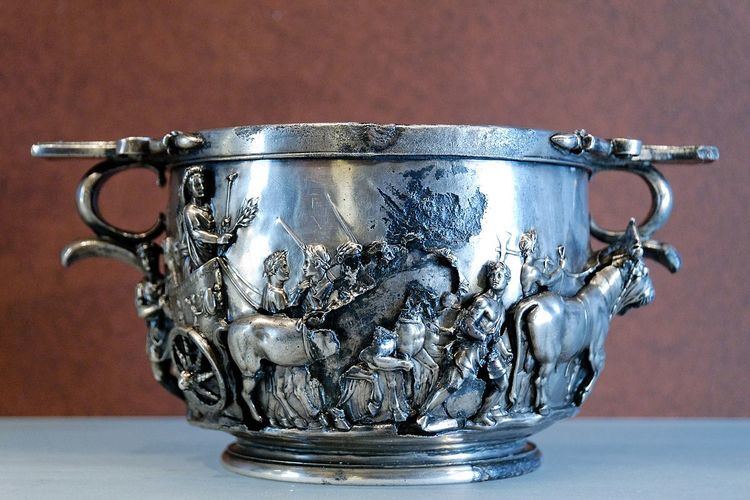Place Circum-Mediterranean | ||
 | ||
Material Ceramic, glass, precious metals Created Multiple cultures, originating predominantly in Greece and exported. Period/culture A vaseform of the Iron Age | ||
A skyphos (Greek: σκύφος; plural skyphoi) is a two-handled deep wine-cup on a low flanged base or none. The handles may be horizontal ear-shaped thumbholds that project from the rim (in both Corinthian and Athenian shapes), or they may be loop handles at the rim or that stand away from the lower part of the body. Skyphoi of the type called glaux (owl) have one horizontal and one vertical thumbhold handle.
Contents
Examples
Early skyphoi were made during the Geometric period. Corinth set the conventions that Athens followed. Over a long period the shape remained the same while the style of decoration changed.
Skyphoi were also made of precious metals, generally silver and gold leaf, many examples exist. One possible, well-preserved example is the Warren cup, an ovoid scyphus made of silver, as described by John Pollini. A Roman skyphos of cameo glass can be seen at the Getty Museum.
Comparable forms of a handled drinking cup on a base included:
Modern uses
The word skyphos has been adopted for the purposes of biological classification with regard to jellyfish, which are included in the class Scyphozoa (literally cup-shaped animal), and Sarcoscypha, the scarlet cup fungus.
